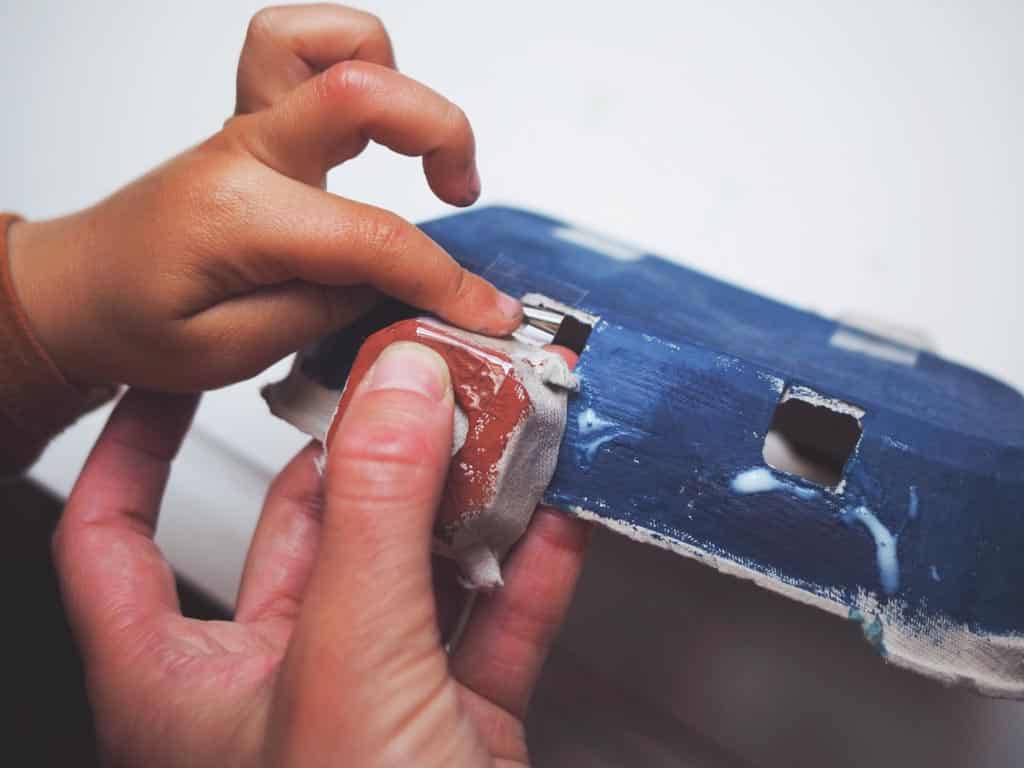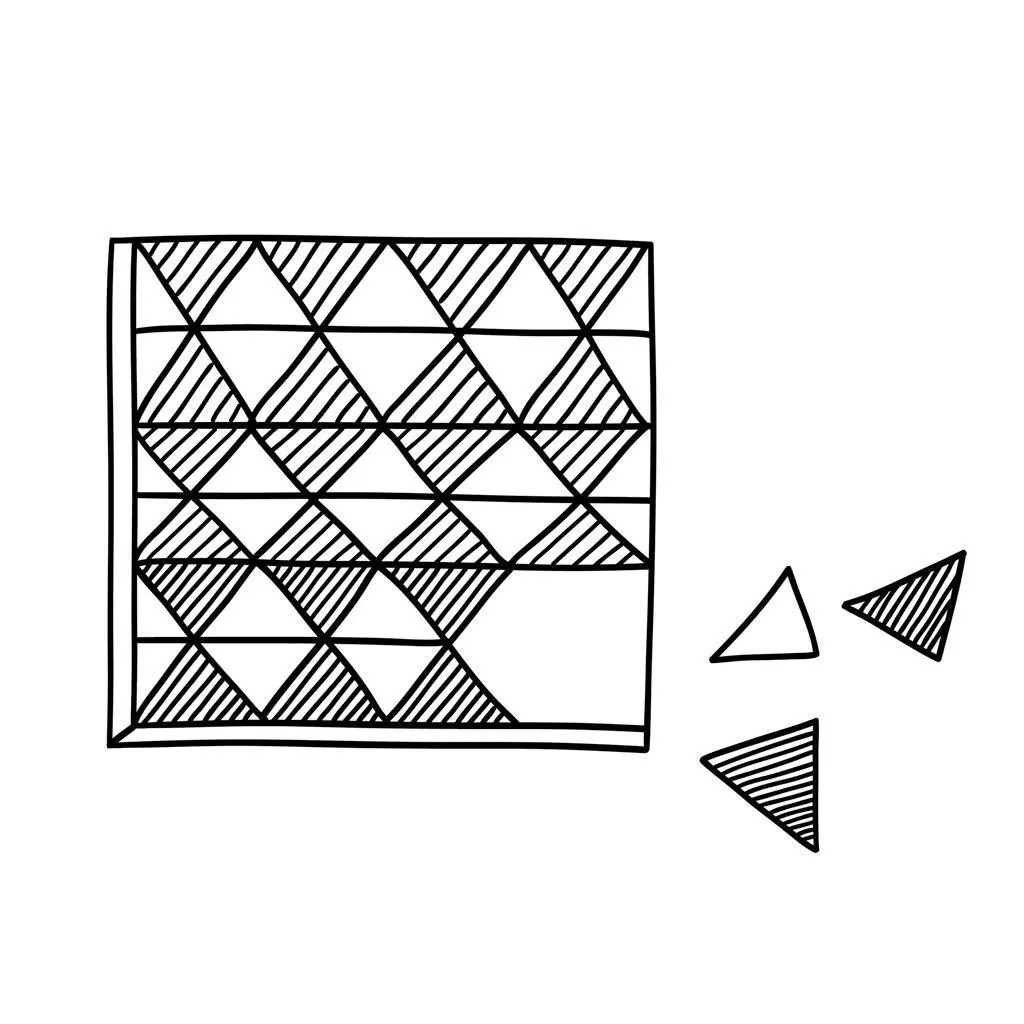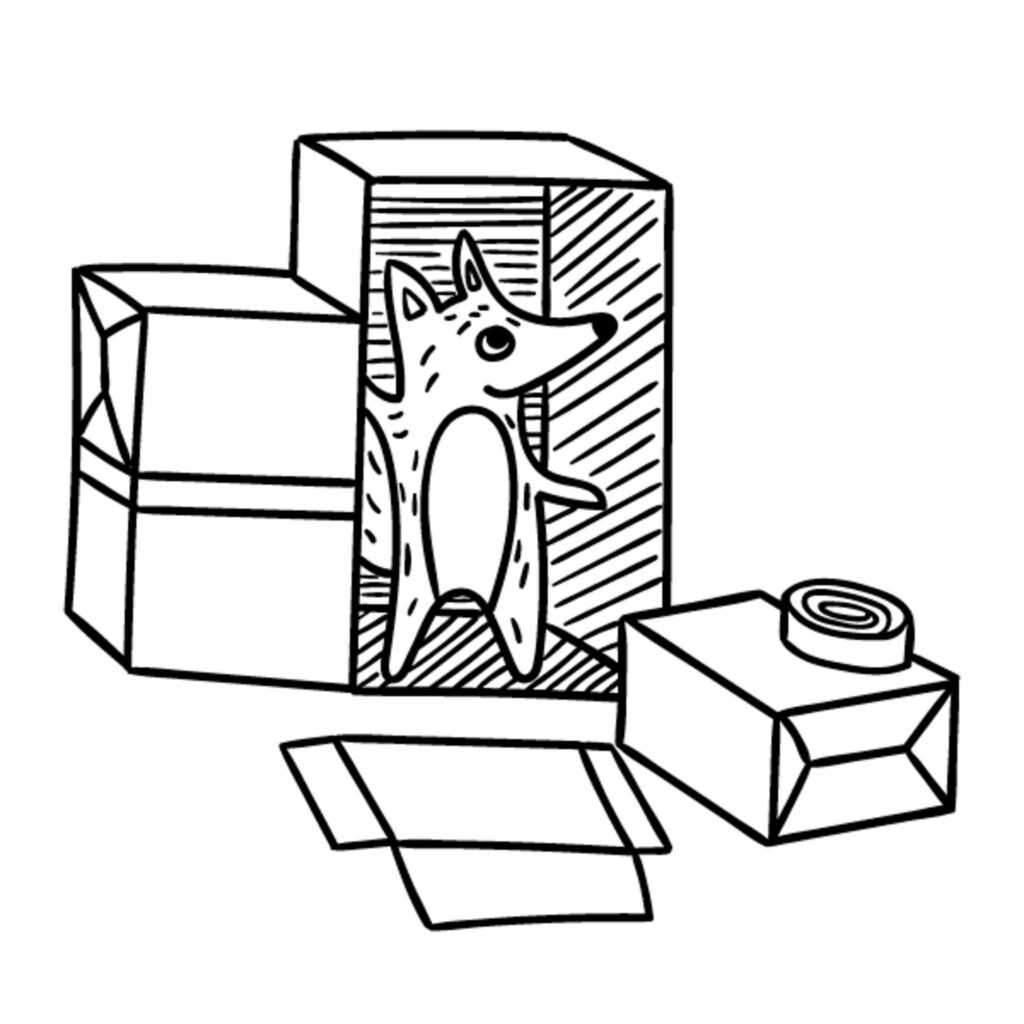There is construction play – and then there is junk modelling. Junk modelling is by far the most creative and challenging type of construction play for young children. Toys like Lego and wooden blocks are excellent and rightly popular – but their strength is also their greatest weakness. Regular sizes and straight lines make construction easy for small hands, but they also limit the extent to which a creation can morph and change.
With junk modelling, children are encouraged to engage in divergent thinking. This is super important! Convergent thinking is for tasks that have only one outcome, such as puzzles. On the other hand, divergent thinking is for tasks that have several possible solutions and the child has to find the best one.
A child fashioning a robot in a junk modelling session might need to ask: what’s the best material to use for my robot’s eyes? Should I cut up toilet rolls, or use those foil cake trays from the recycling? How will I attach them? Glue or tape? If glue, I have to lie the robot down until the glue sets otherwise the eyes will fall off. And so on. Thus, the junk modelling child is setting herself challenges and finding solutions independently. It’s also a great way to put a dent in your recycling pile. A few suggestions for successful junk modelling:
- Keep a box for junk modelling so you’ll always be ready
- save cereal boxes, egg boxes, toilet rolls, plastic spoons, aluminium foil – anything!
- Connect together with tape, glue, string, blu-tack, paper clips, pegs or whatever you can find
- Turn it into a race by setting time limits, or give your modelling a theme by creating an army or family, or setting a scene
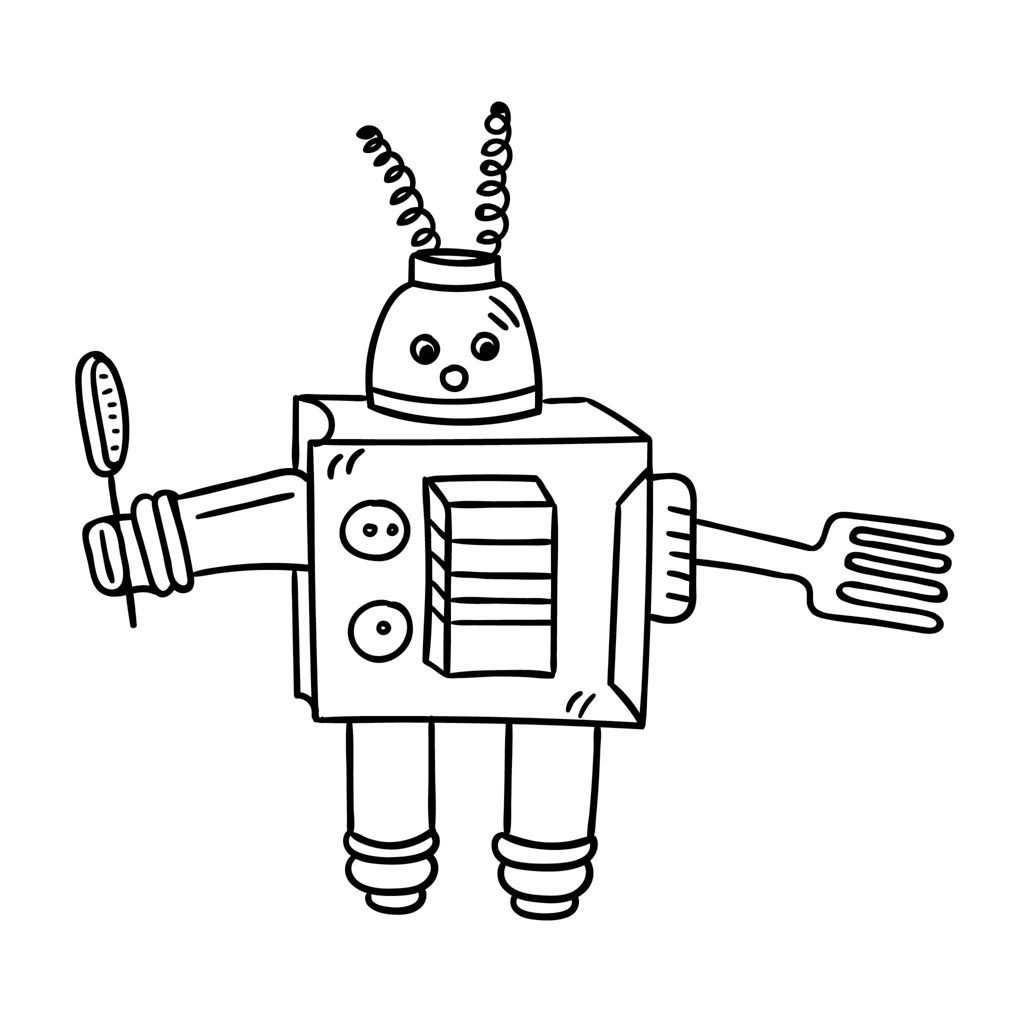
Project | Make a Junk Model Robot
All junk-modelling is fun, but a robot has extra value in that he or she can become a character and used for imaginative play. You can make families, or armies, of robots – no matter how often you make them they always seem to take on their own character and personality. Junk robots are also a brilliant way to support the child who is exploring their connecting schema. Working out ways in which a robot’s limbs can stay together and move will keep the connector engrossed for many happy hours. There is no instruction manual for making your own robot but some junk items you can use include:
- Old boxes, tubes, bottle lids, packaging
- Sticky tape or glue
- String (great for attaching moving limbs)
- Paint
- Aluminium foil (for authentic metallic robots)
- Buttons or sequins for eyes
- Old cds (for robots on wheels)
- Old toothbrushes
- Circuit boards and wires from old electronic devices (though do this under strict supervision as some components can be dangerous or contain hazardous materials)
Use whatever bits and pieces that you have to build your robot. You can incorporate other interests by making your robot a dinosaur robot or a clown robot – there are no limits.
Project | Over-sized construction
Time to go large! Most children are excited by the wow-factor of something over-size, whether it’s a lifesize version of their favourite character or a giant water pistol. Over-size construction has all the fun of BIG, with the added benefits of helping them develop a better understanding of material properties; the bendiness of cardboard or the strength of wood are all easier to understand, and put to the test, on a larger scale.
It’s also great for gross motor skills and dexterity: manoeuvring large pieces requires a kind of control that is unfamiliar for small hands. Extra care and skill is needed to carry, turn or push a big plank or box.
You can use boxes, planks, old tyres, sheets, buckets and anything else you want to incorporate into your over-size construction. And once you’ve built it, you can use your structure for a den or hideout.
A cardboard castle
During lockdown, the days were interminable. We were stuck at home with nothing to do.
It’s all a bit of a blur now, but I remember having to stay home for the first few weeks before the rules were relaxed and we could go to the park.
We bought bicycles for the children and they came in BIG boxes.
The recycling centre was closed so we couldn’t dispose of the packaging.
What to do?
We kept the boxes indoors and built things.
The boxes don’t have to be that big
Bicycle boxes are pretty big. What you have lying around your home may not be on this scale, but no matter.
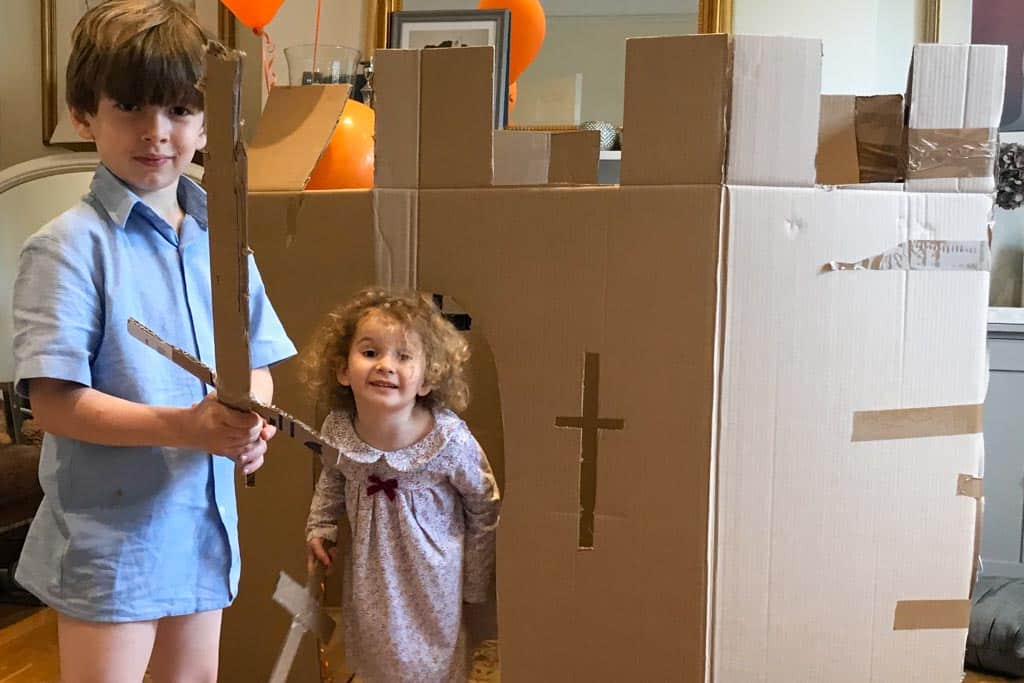
Take smaller boxes and stick them together. In fact, that castle you see above was actually made with three bike boxes and a lot of tape.
Going in, coming out, attacking and defending; looking through, looking over, hiding and revealing. It was so much fun.
Leave your children to do the construction themselves, as far as possible.
Younger ones will not be able to imagine what the boxes could become. They will be happy crawling inisde. If that’s the case, perhaps you could make it more fun by cutting out a window or flap.
My children are a bit older. After crawling inside the boxes for a few minutes and playing invasion games, they decided that they’d like to stick the boxes together to make a castle. I helped with this and when they wanted battlements and a drawbridge, I used the box cutters. But other than that, I left them to it.
Over the coming days, they cut arrow slits, filled it with bedding, painted blood stains on the walls and recreated every battle they could think of. We had recently visited Battle Abbey in Hastings so war was fresh in their minds. Actually, in the 100 Toys house, war is always fresh in their minds!
This castle lasted 10 days before we got rid of it. It was sturdy and would have lived on for much longer but by that point I wanted to reclaim the sitting room. It survived for a few more days in the garden before finally succumbing to the inevitable after it became a target for the football…
Final word
To eke even more life out of a big box, try cutting it down and laying it out flat. Draw or paint a cityscape replete with roads, bridges and buildings and get out the toy cars for large-scale small world play.
What if I don’t have boxes?
You can push chairs back to back or drape a blanket over the top. An upturned armchair makes a small private space. Cover your table with a sheet for a ready-made den, complete with door.
The point is to create an enclosed, private space, that your child can enjoy without you.

